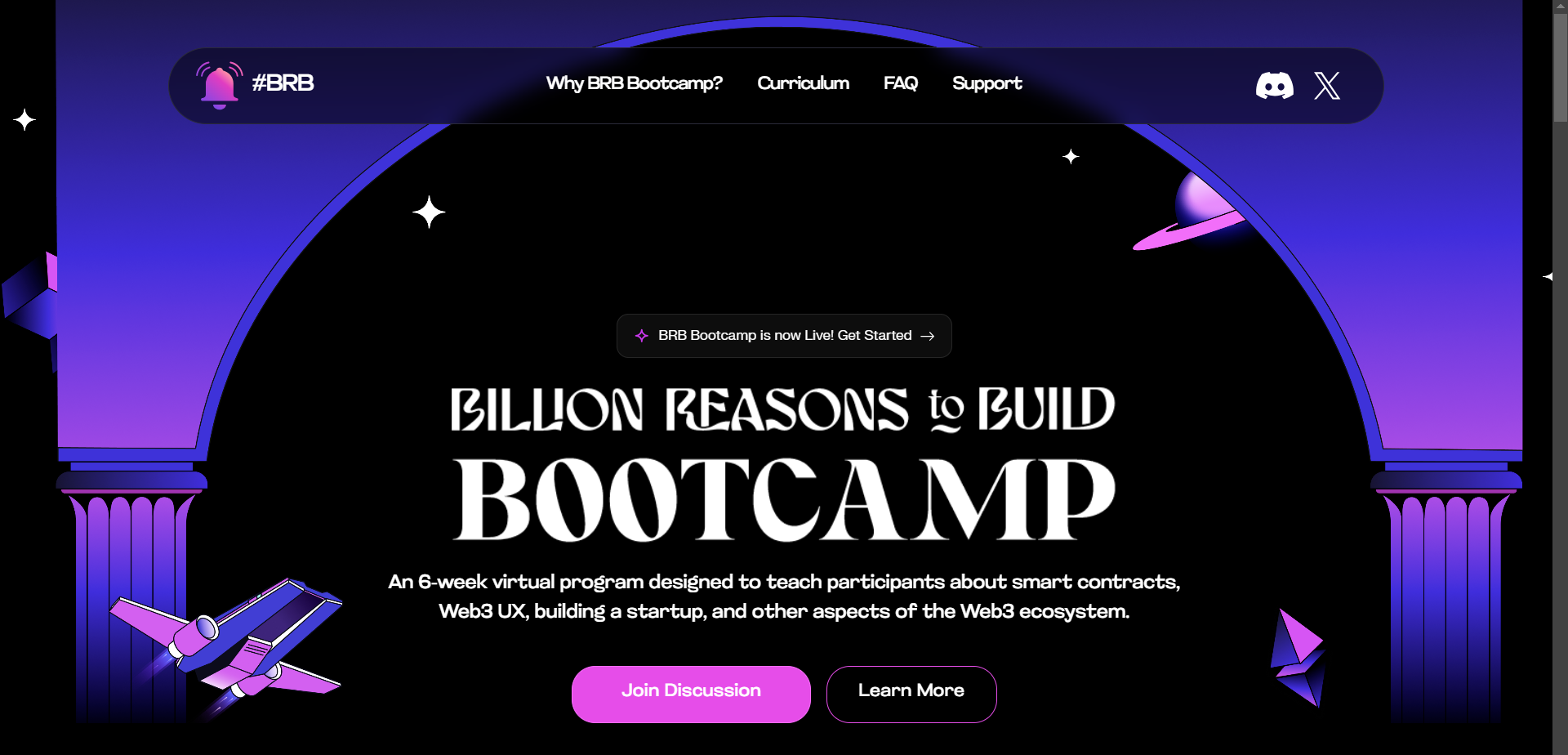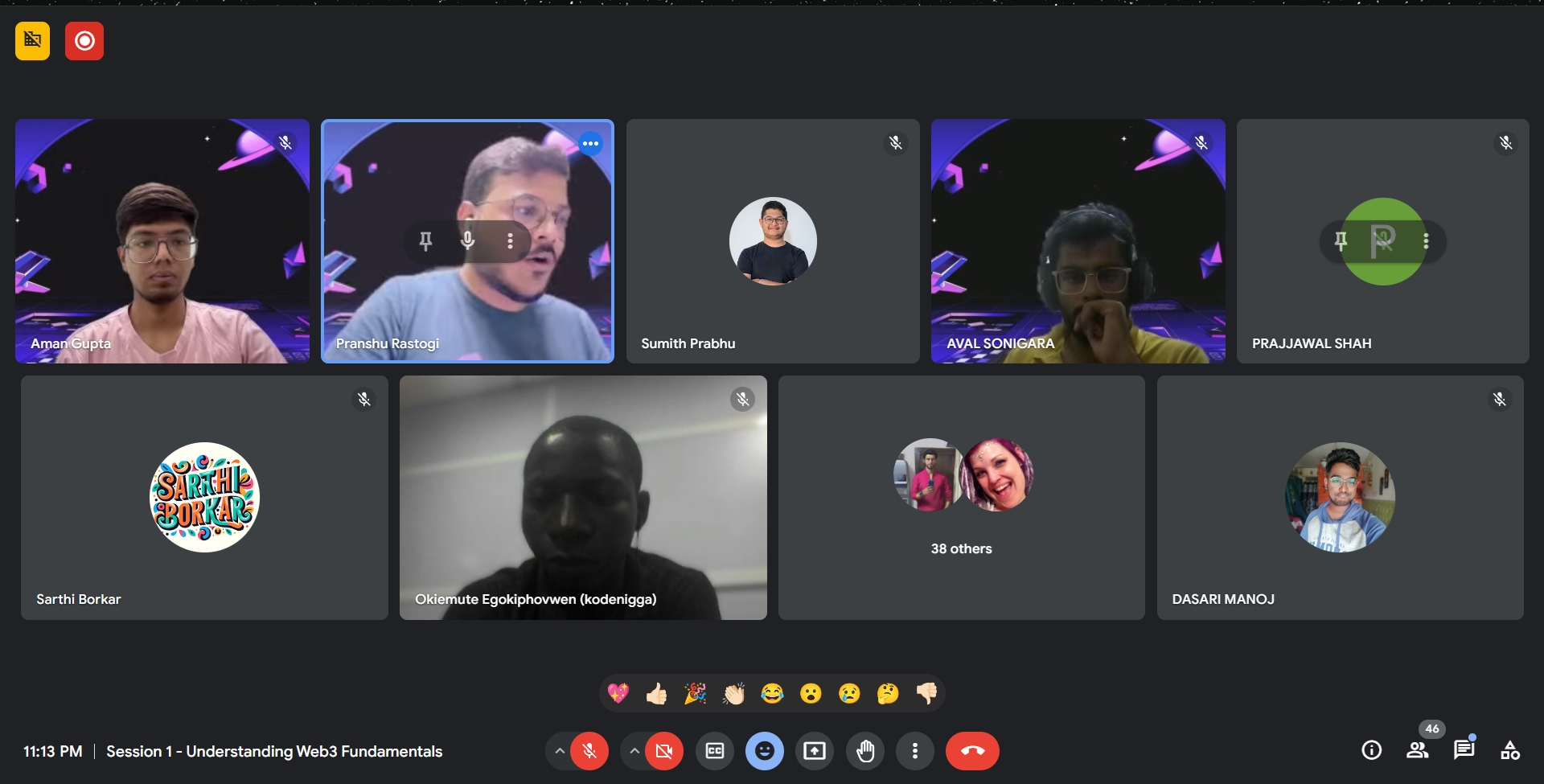Discover the Future of Web 3: Key Takeaways from BRB Bootcamp Session 1
 Dasari Manoj
Dasari Manoj
Content:
Introduction
Key Learnings from Session 1
Decentralization and Web3
Blockchain Fundamentals
Ecosystem of Decentralized Applications (DApps)
Consensus mechanisms
Intro to Smart Contracts
Use Cases and Real-World Examples
Supporting Materials
Session Recording Highlights
Relevant Quotes and Statistics
Helpful Visuals and Diagrams
Conclusion
Summarizing the Takeaways
Looking Ahead: Topics for Further Exploration
Introduction:
The inaugural first session of the BRB Bootcamp immersed participants in the vast realm of Web3.0 and blockchain technology by Aman Gupta. Kicking off with a comprehensive introduction to the decentralized web, also known as Web
3.0, the session delved into the intricacies of blockchain, the revolutionary technology underpinning this paradigm shift. Attendees gained insights into the fundamental concepts of consensus mechanisms, which ensure the integrity and security of blockchain networks.
After a rejuvenating break, the session transitioned into exploring the world of smart contracts, self-executing digital agreements that form the backbone of Web3 applications. Additionally, the topic of blockchain scaling solutions, addressing the challenges of throughput and efficiency, was thoroughly discussed. The session culminated with a captivating exploration of pioneering Web3 applications and innovations, showcasing the boundless potential of this transformative technology

Key Learnings from Session 1:
Decentralization and Web3
The session illuminated the core concepts of Web3.0, the visionary iteration of the internet built upon the principles of decentralization, openness, and user empowerment. Web3.0 aims to address the shortcomings of the current web landscape, such as data privacy concerns (e.g., Facebook's Cambridge Analytica scandal) and centralized points of failure (e.g., Facebook and AWS outages). By leveraging blockchain technology, Web3.0 removes central authorities, enhances user privacy and control over data, and ensures secure and transparent online experiences.
Blockchain Fundamentals
At the heart of Web3.0 lies blockchain technology, an immutable and transparent distributed ledger that facilitates secure record-keeping and asset tracking within a network. The session delved into key blockchain terminologies, including consensus algorithms, tokens (coins vs. tokens), genesis blocks, transaction fees, miners/validators, block rewards, and the concepts of fungible and non-fungible tokens.
Ecosystem of Decentralized Applications (DApps)
The session shed light on the burgeoning ecosystem of decentralized applications (DApps), which are at the forefront of the Web3.0 revolution. Unlike traditional applications, DApps operate on decentralized networks, leveraging blockchain technology to eliminate the need for central authorities or intermediaries. Key characteristics of DApps include:
Open Source: DApps are built on open-source code, fostering transparency and community collaboration.
Decentralized: They operate on peer-to-peer networks, distributing data and processing power across multiple nodes, reducing the risk of single points of failure.
Censorship-Resistant: With no central authority controlling the network, DApps offer resilience against censorship or interference.
Token-Based: Many DApps incorporate cryptocurrencies or tokens as an incentive mechanism for network participants and for accessing certain features.
DApps span across various domains, including finance, gaming, social media, and more, offering innovative solutions that prioritize user autonomy, data ownership, and trust in code over centralized entities.
Consensus Mechanisms
Consensus mechanisms play a crucial role in ensuring the security, scalability, and decentralization of blockchain networks. The session explored two prominent consensus models:
Proof of Work (PoW)
Used by Bitcoin, PoW requires miners to compete in solving complex mathematical puzzles, with the first solver broadcasting the solution to the network for verification.
Network security increases with more computational power dedicated to mining.
Bitcoin has a fixed total supply of 21 million coins and an average block time of 10 minutes.
After all coins are minted, miners will rely solely on transaction fees as rewards.

Proof of Stake (PoS)
Adopted by Ethereum 2.0, PoS involves validators staking their cryptocurrency holdings to propose and attest to new blocks.
Network security grows with more validators participating and staking their funds.
Validators can become a part of the consensus process by staking a minimum amount of cryptocurrency, with rewards and penalties (slashing) in place to incentivize good behavior.
Ethereum's maximum supply is not fixed, and the network aims to transition fully to PoS through the Ethereum Improvement Proposal (EIP) 1559.

The session also touched upon the consensus mechanisms of other prominent blockchains, such as Solana's Proof of History (PoH), which contributes to its high transaction throughput while highlighting the trade-offs in terms of increased downtime.
Introduction to Smart Contracts
Smart contracts, a revolutionary concept coined by Nick Szabo in 1994, are self-executing computer programs stored on the blockchain. These programs follow predefined rules and conditions, executing automatically when those conditions are met. The session explored the role of smart contracts in various use cases, including the creation and distribution of digital assets, voting systems, decentralized finance (DeFi), decentralized autonomous organizations (DAOs), stablecoins, supply chain management, and gaming.
Blockchain Scaling
Addressing the blockchain trilemma – the challenge of achieving decentralization, security, and scalability simultaneously – is a critical aspect of blockchain technology. The session highlighted the importance of scaling solutions to handle the ever-increasing transaction volume and user base efficiently, without compromising fees or transaction speeds.
Onchain Scaling: Techniques to improve the base layer's throughput, such as increasing block sizes or reducing block times.
Offchain Scaling: Solutions that process transactions off the main chain and periodically settle on the base layer, such as state channels and sidechains.
Layer 2 Scaling: Collective term for a set of scaling solutions built on top of the base blockchain layer (Layer 1), leveraging its security while improving transaction throughput and reducing fees. Examples include optimistic rollups, ZK-rollups, and state channels.
Use Cases and Real-World Examples
The session highlighted several compelling use cases and real-world examples of DApps, demonstrating the transformative potential of Web3.0 technology:
Decentralized Finance (DeFi): DApps like Uniswap, Aave, and Compound are revolutionizing the financial sector by enabling peer-to-peer lending, borrowing, and trading without intermediaries.
Non-Fungible Tokens (NFTs): Platforms like OpenSea and Rarible have popularized NFTs, enabling the creation, ownership, and trade of unique digital assets on the blockchain, from artworks to collectibles.
Decentralized Autonomous Organizations (DAOs): DAOs, such as MakerDAO and BitDAO, are community-driven organizations governed by transparent, immutable smart contracts, enabling decentralized decision-making and resource allocation.
Supply Chain Management: DApps like VeChain and OriginTrail leverage blockchain technology to enhance supply chain transparency, traceability, and efficiency, benefiting industries from food to pharmaceuticals.
Social Media and Content Platforms: Projects like Minds, Steemit, and Brave aim to disrupt traditional social media and content platforms by offering decentralized, censorship-resistant alternatives that prioritize user privacy and fair compensation for content creators.
Gaming: Decentralized gaming platforms like Axie Infinity and Decentraland are pioneering the concept of true digital ownership, allowing players to earn and trade in-game assets as NFTs on the blockchain.
The session hinted at the potential for an in-depth exploration of blockchain scaling concepts in a future dedicated blog post, recognizing the significance of this topic in the Web3.0 ecosystem.
Supporting Materials:
The session provided a wealth of valuable resources to reinforce the concepts discussed and aid in further exploration. These include:
Class Recordings: Link Presentation: Link
Additional Resources:
Bitcoin Whitepaper: Link
Ethereum Whitepaper: Link
PUSH Documentation: Link
Ethereum 101: Link
Blockchain Basics: Link
Relevant Quotes and Statistics
The session highlighted several thought-provoking quotes and statistics, including:
"The blockchain is an incorruptible digital ledger of economic transactions that can be programmed to record not just financial transactions but virtually everything of value." - Don Tapscott, Author of "Blockchain Revolution"
"Bitcoin is a technological tour de force." - Bill Gates
"Ethereum is a blockchain-based decentralized computing platform that executes smart contracts." - Vitalik Buterin, Co-founder of Ethereum
Conclusion:
BRB Bootcamp's inaugural session provided a comprehensive overview of Web3.0 and blockchain fundamentals, covering decentralization, consensus mechanisms, smart contracts, and the transformative potential of decentralized applications (DApps). It highlighted the importance of scaling solutions to address the blockchain trilemma and showcased real-world use cases across various industries. As the bootcamp progresses, attendees can expect to delve deeper into technical aspects, development frameworks, and emerging trends shaping Web3.0's future, including security, interoperability, and regulatory considerations – paving the way for continued learning and exploration of this revolutionary technology.
Give a 👀 at their site PUSH and follow their twitter here pushbuilders
Follow me on twitter dasarimanoj for more such content on Web 3.0!
#Web3.0 #Blockchain #BRBBootcamp #Pushbuilders #buildinpublic #learninpublic
Subscribe to my newsletter
Read articles from Dasari Manoj directly inside your inbox. Subscribe to the newsletter, and don't miss out.
Written by
